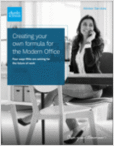What You Need to Know
- The growing embrace of alternatives highlights the importance of having access to a wide variety of such products — and the technology to support them.
- The more data a platform can gather about specific investments, the better.
- A good tech solution should be able to accommodate both advice and broker-dealer work.
October was the best month for the Dow since 1976, while November also produced broad-based gains. But the recent advances don’t negate what has otherwise been an awful year for the markets, which have been bludgeoned by rising inflation and high-interest rates worldwide.
Through the first 11 months of the year, all the major indexes are well off all-time highs, led by the tech-heavy Nasdaq, which shed 27% in 2022. Notably, bonds have provided little relief, bucking historical trends by moving in tandem with stocks.
Against this backdrop, the findings of a recent study by Broadridge Financial Solutions are hardly surprising. The firm found that 72% of financial advisors use alternatives in investor portfolios, a 13-point jump from the first quarter of this year.
For firms and advisors, the growing embrace of alternatives highlights the importance of having access to a wide variety of such products from which to choose. Indeed, clients have different needs and risk thresholds, so finding the right fit is vitally important.
But an equally important consideration is whether your technology platform is “alt friendly” enough to make all the pieces to a client’s investment and financial planning puzzle fit together.
Here are four questions to consider about your current or prospective tech solution.
1. Can it handle alternatives?
When it comes to alternatives and tech, integration is critical. But there are different levels of integration. Some platforms claim they can incorporate alternative products, even though they provide advisors with nothing more than a surface-level view.
In other words, you can see a client’s account balance and performance data, but getting and transferring information beyond that requires going to a different platform. Not only can that be a lengthy, drawn-out process, but it can lead to a host of errors and faulty assumptions.
2. What type of analytic information does it provide?
Consistent with the above, the more data a platform can gather about specific investments, the better. Consider private equity funds. They have years-long, staggered distribution schedules.








 December 05, 2022 at 01:10 PM
December 05, 2022 at 01:10 PM












 Copyright © 2024 ALM Global, LLC. All Rights Reserved.
Copyright © 2024 ALM Global, LLC. All Rights Reserved.